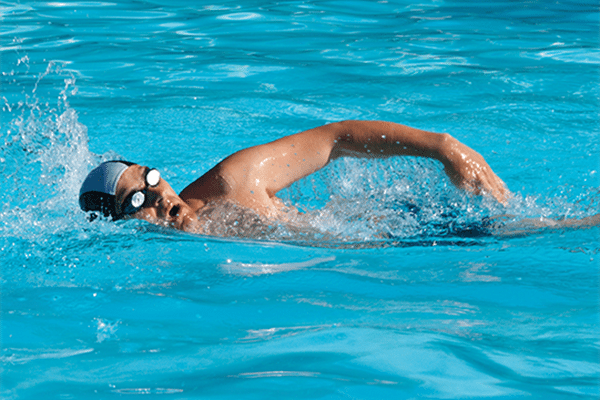Looking for a new swim workout to try in the pool?
We want to share one of our favorite freestyle swim workouts with you. We provide the workout in its original form then share ways that you can adapt it to your specific needs:
500 warm-up choice or SKIPS (100 swim / 100 kick / 100 IM / 100 pull / 100 swim)
5 x 100’s race pace with 15s rest after each 100
400 endurance pace with 30s rest
4 x 100’s race pace with 15s rest after each 100
300 endurance pace with 20s rest
3 x 100’s race pace with 15s rest after each 100
200 endurance pace with 10s rest
2 x 100’s race pace effort with 15s rest after each 100
100 endurance pace with 10s rest
100 race pace effort with 15s rest after each 100
50 + yards cool down
Total: 3050 yards (or meters)
Notes: Race pace is the pace you expect to swim at your best during your race. Endurance is steady effort that you can maintain for a long period of time.
Ways to adapt this workout (or other workouts you encounter):
Change the Distance – Maybe you need shorten a workout because of limited time or you are not yet at the workout distance (3,000 yard is a lot for a beginner athlete). One way to shorten the distance on this workout is to skip the 500 warm-up and 5 x 100’s and start at the 400 endurance pace as the warm-up. Or, you can follow the workout for the allotted time you have available then stop when the time is up. It is always better to cut a swim workout short instead of skipping it entirely. Swimmers develop a “feel” of the water and even a few days out of the water may lead to a less efficient stroke.
Use Gear – Paddles, buoy and fins are all great ways to keep workouts more interesting. For instance, in the workout above you could decide to use paddles and/or a pull buoy for the endurance sets. Paddles increase resistance so will strengthen your shoulders but overusing paddles can lead to injury so start using them only for short durations. Using a pull buoy is an excellent way to focus on upper body stroke mechanics without thinking about your kick. They also simulate the additional buoyancy you’ll get from wearing a wetsuit and help with legs tired from biking and running.
Change the Rest Interval – The above workout says to take 15 seconds rest after each 100. As you build endurance you can change the rest to 10s then eventually 5s. Or, look at what paces you are swimming and set a fixed interval. For example, if you hitting the wall around 1:43-1:46 min/100 yards (or meters), you could set the interval to 1:55. If you swim faster, you’ll have a bit more rest which provicds an incentive keep the pace higher even when you feel fatigued.
Switch the Hard and Easy Segments – This workout can be done multiple days in a row and could still feel different and train the body in different ways. Instead of making the 100’s hard you could begin with 5 x 100’s warmup and do the 500 as a race pace effort. Then continue with 4 x 100’s moderate with the 400 as a race pace effort. This will train you to swim continuously at harder efforts.
Having training plans and swim workouts are extremely helpful, but ultimately you want each workout to meet your goals, your fitness and your ability level.
Be sure to out last week’s blog on Four Tips to Improve Your Swim in a Triathlon.
Happy training,
David
—



